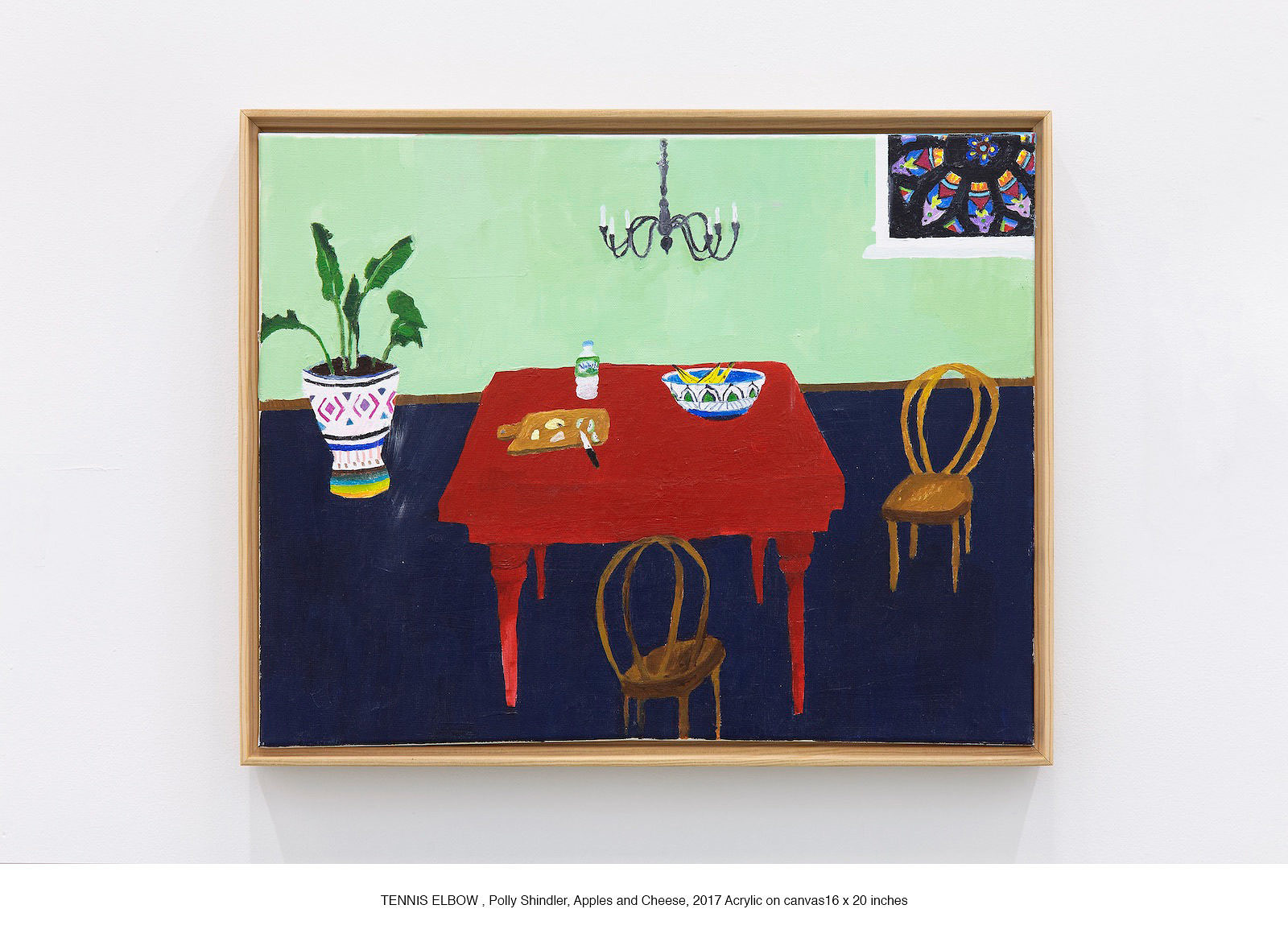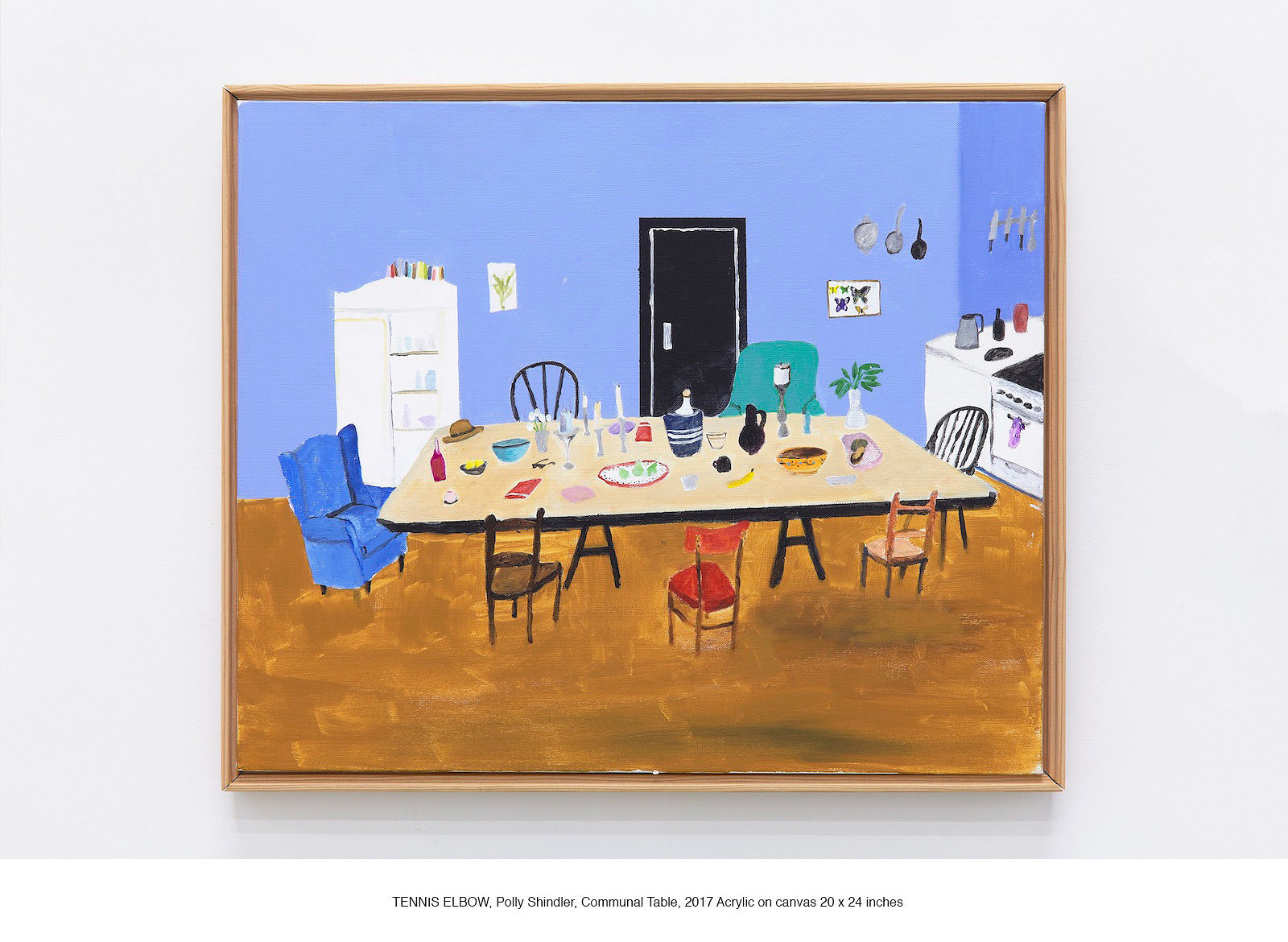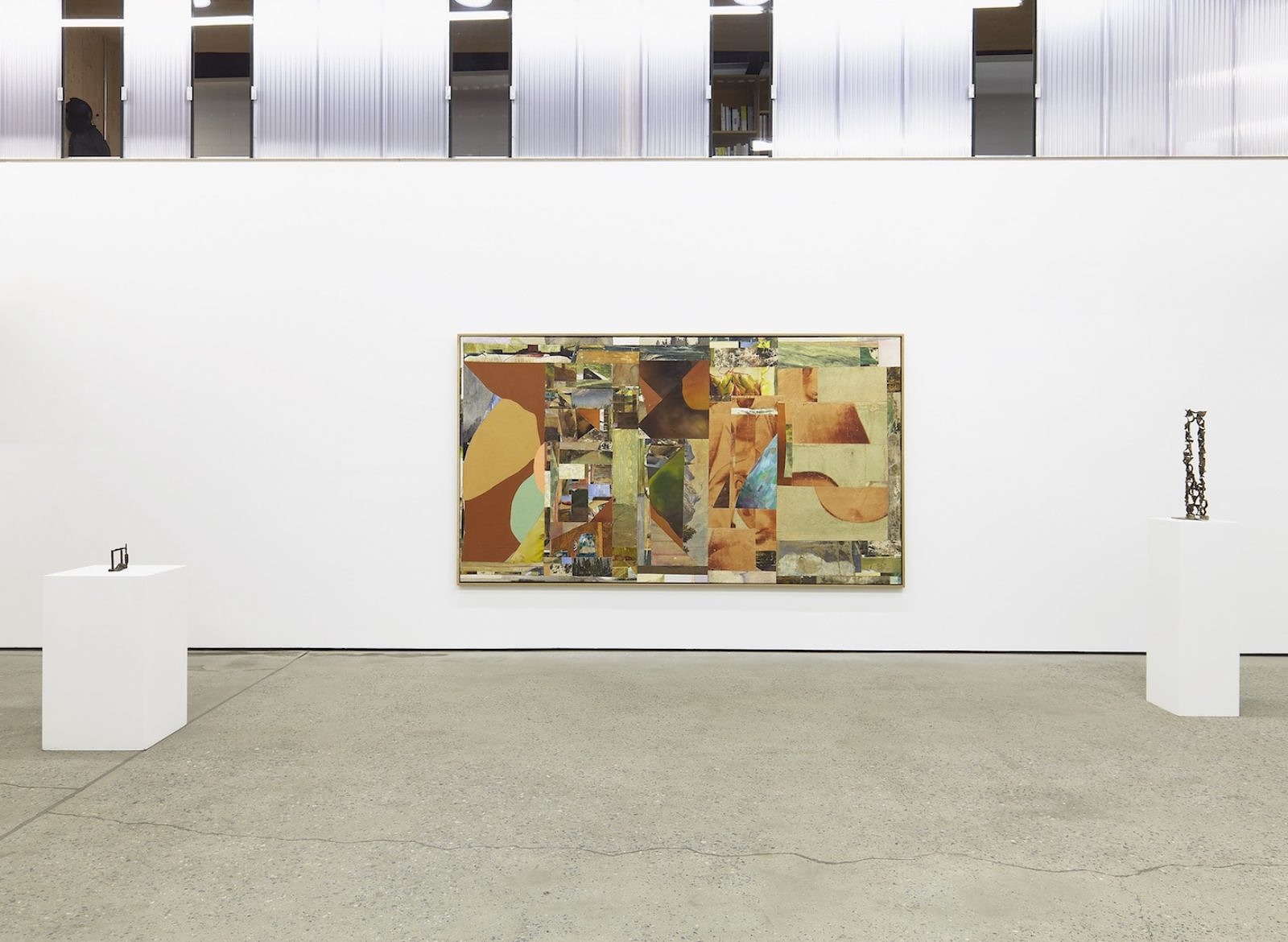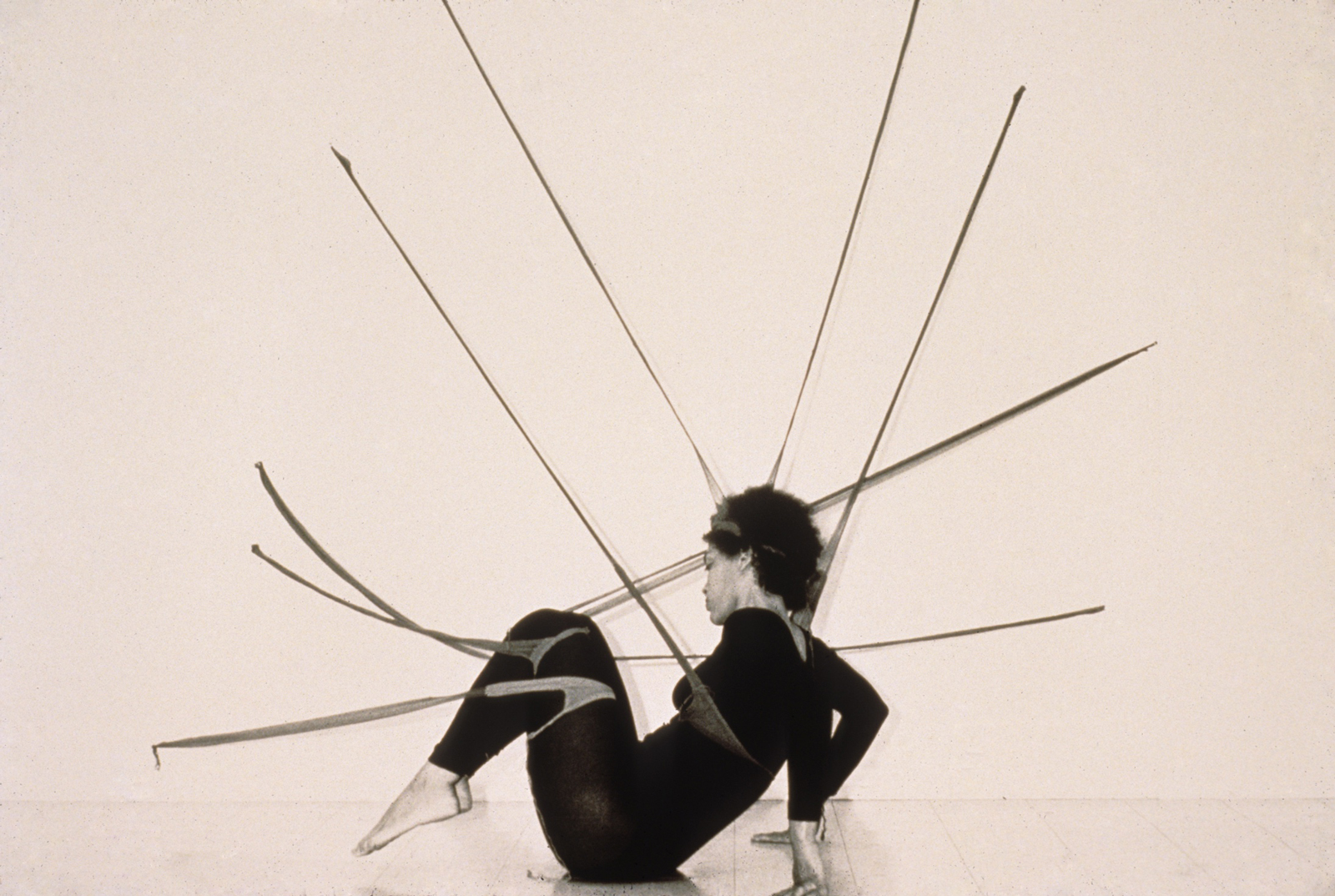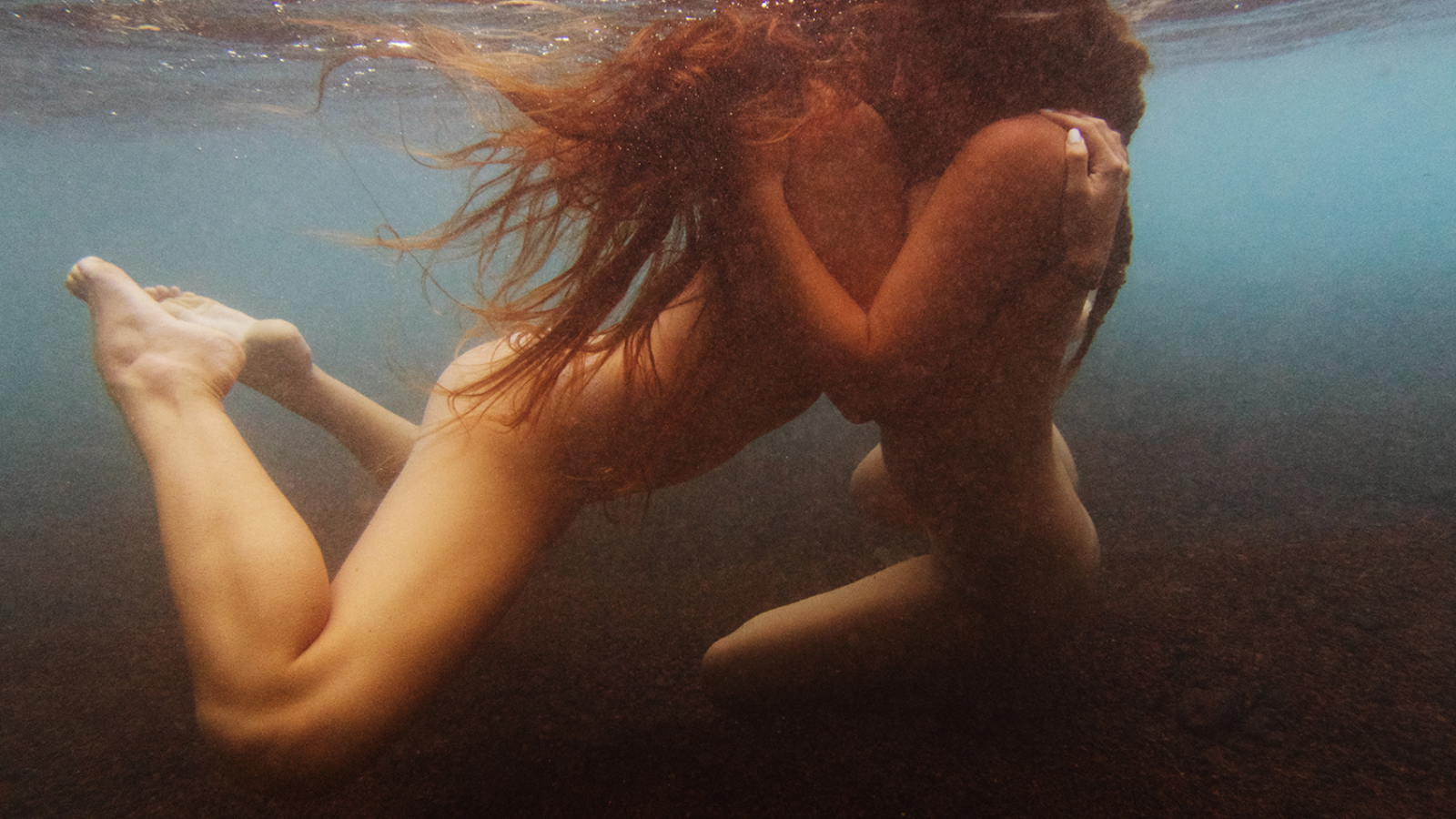Text: Alec Coiro
Images Courtesy of Journal Gallery
Graham Collins literally built a wall in the gallery for this show. As bad a name as wall building has gotten recently, Graham goes a long way toward rehabilitating it through the sheer expression of craftsmanship that his wall and the rest of his show expresses. Painting fans and critics will appreciate Graham’s art and innovation; painters themselves will look at his canvases and wonder “how does he stretch it!”
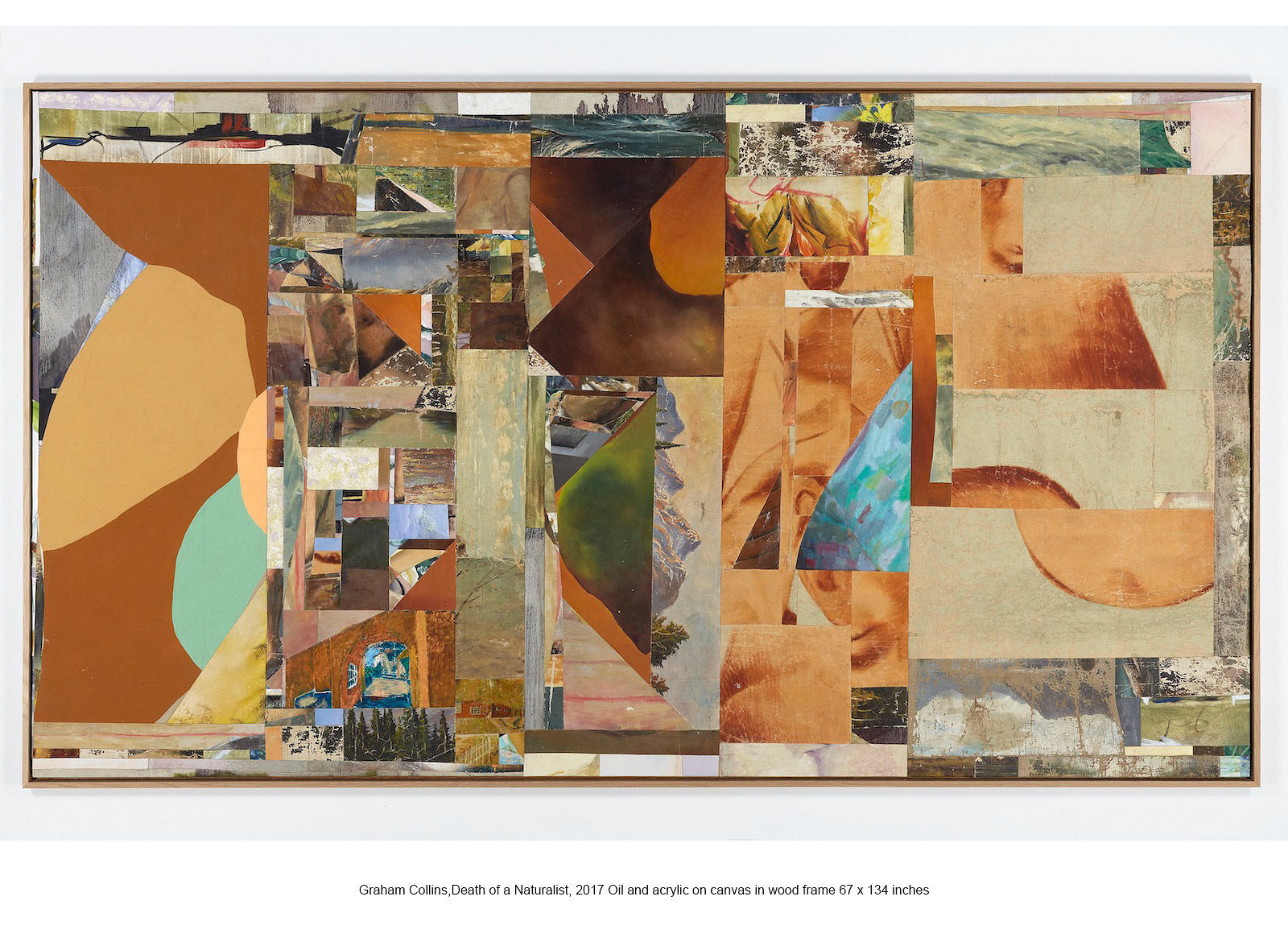
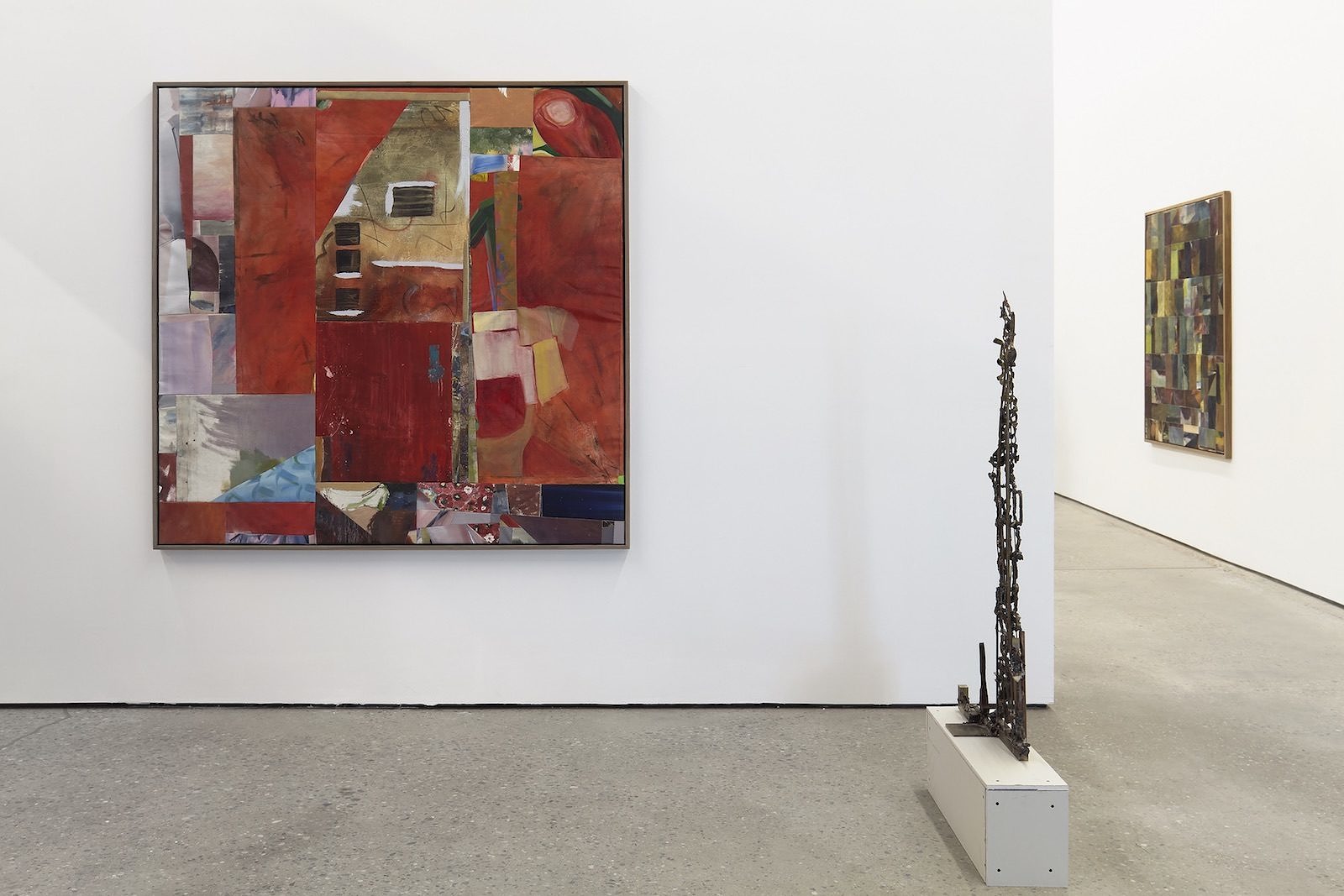
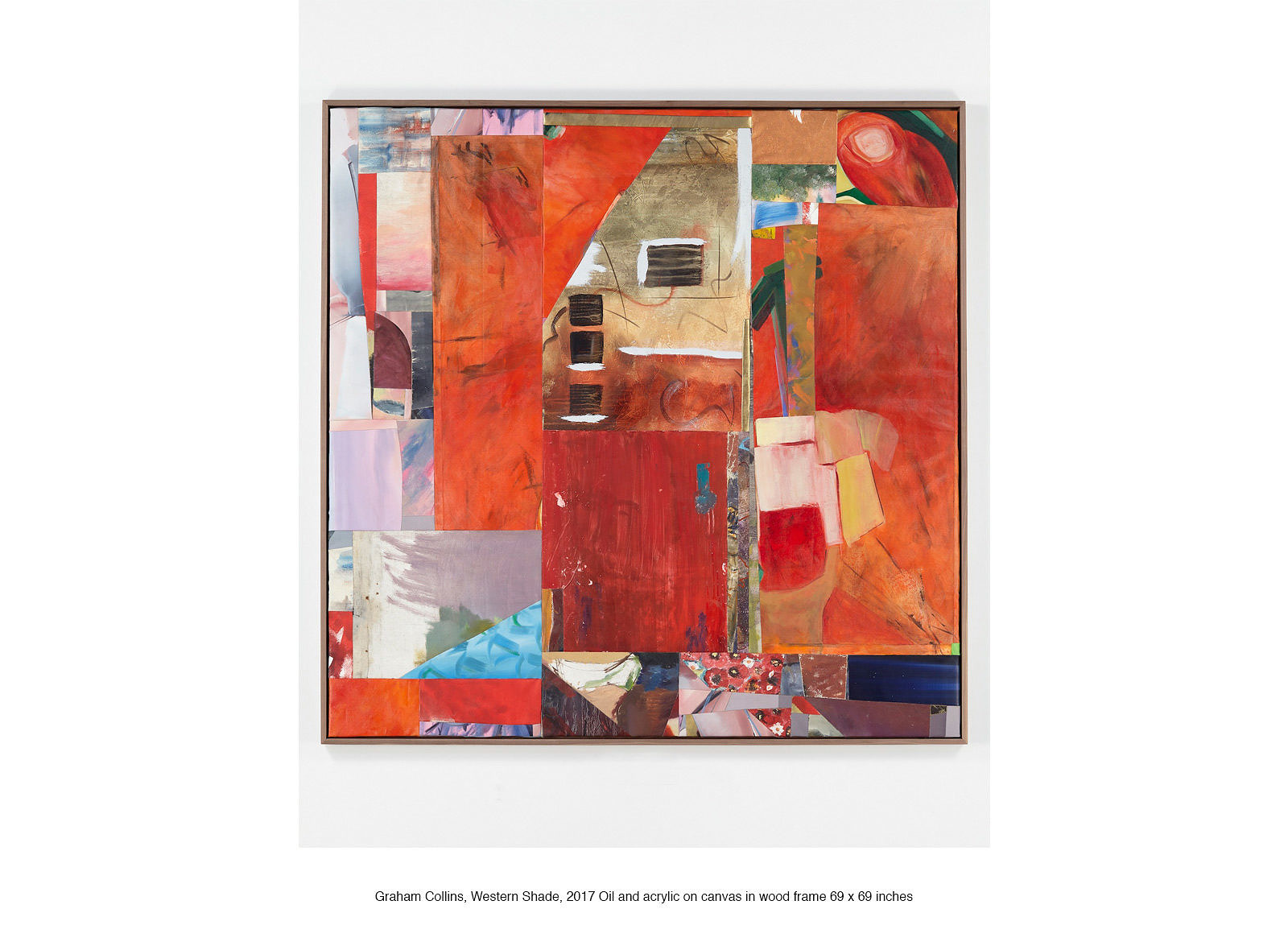
Often times when critics write about collages they will employ the metaphor of “stitching together.” For Collins, it is no metaphor. His work is literally stitched together from stiff unwieldy materials that he has somehow tamed and made taught. As if raging as hard as possible against the soft light of Photoshop’s virtual collaging, the artist chooses the most tactile materials, literally cutting up paintings thick with impasto, and recombining them. Looking at the final product in the space, I had thought for sure that the paintings had been mixed together with leather, but apparently, that is just a trick of the eye. The textures that Graham’s process yields are a reward that elevates the artworks far above the level of experimentation.
The source paintings are described in the press release as “found paintings,” making their provenance obscure. Although, no doubt we can all imagine the circumstances of finding them, and we’ve all wondered about the painting on the curb, or in the thrift store. In Western Shade, Collins saves these works from their typical repurposing as kitsch and makes them materials in something that combines the best of the decorative and the expressionist.
As a cleverly appropriate complement to the sewn paintings, Collins also has bronze sculptures on display. These sculptures are another way of exploring artistic process through the subject of found objects. In this case, however, instead of being the material used in the process, the found object becomes the thing that the process sets out to represent. The walnut Baseball bats leaning against the wall in a deceptively unassuming way could literally be used for ball whacking in the same way an aluminum bat could be, but their bronze has been shaped through a vastly different process than the aluminum. It’s also worth pointing out that the bronze matches the color palette of the sewn paintings, giving the entire experience the sort of unity that a well-wrought gallery show needs.
I’d also be remiss to not give a few well-deserved inches to the exhibit shown in “Tennis Elbow,” the back room at the Journal Gallery. The week I visited, Polly Shindler’s paintings were on display. Schindler’s refusal of perspective and assertion of the artist’s manner gave the fulfilling sense of looking at works by a painter who knew what she wanted to do, set out to do it, and achieved full, smashing success.
